|
- Below is the Tektronix MDO4104-6 spectrum analyzer display showing the Sun radio emissions from approximately 20.1 MHz to 24.0 MHz.
- The Sun radio emission is the white blueish horizontal line just above the bottom of the spectrogram from the fourth frequency division 20.1 MHz to the right edge at 24.0 MHz.
- The first set of strong signals from the left edge is the 17.5 MHz to 17.9 MHz broadcasting band.
- The second set of strong signals from the left edge is the
17 meter (18.068 MHz to 18.168 MHz) amateur radio band.
- Radio station WWV at 20.0 MHz
is the red vertical line in the spectrogram just over one division left of center. WWV distance is 1,511 km with a bearing of 105.3 degrees.
- The strong set of signals just right of the center frequency is the
15 meter
(21.0 MHz to 21.45 MHz) amateur radio band.
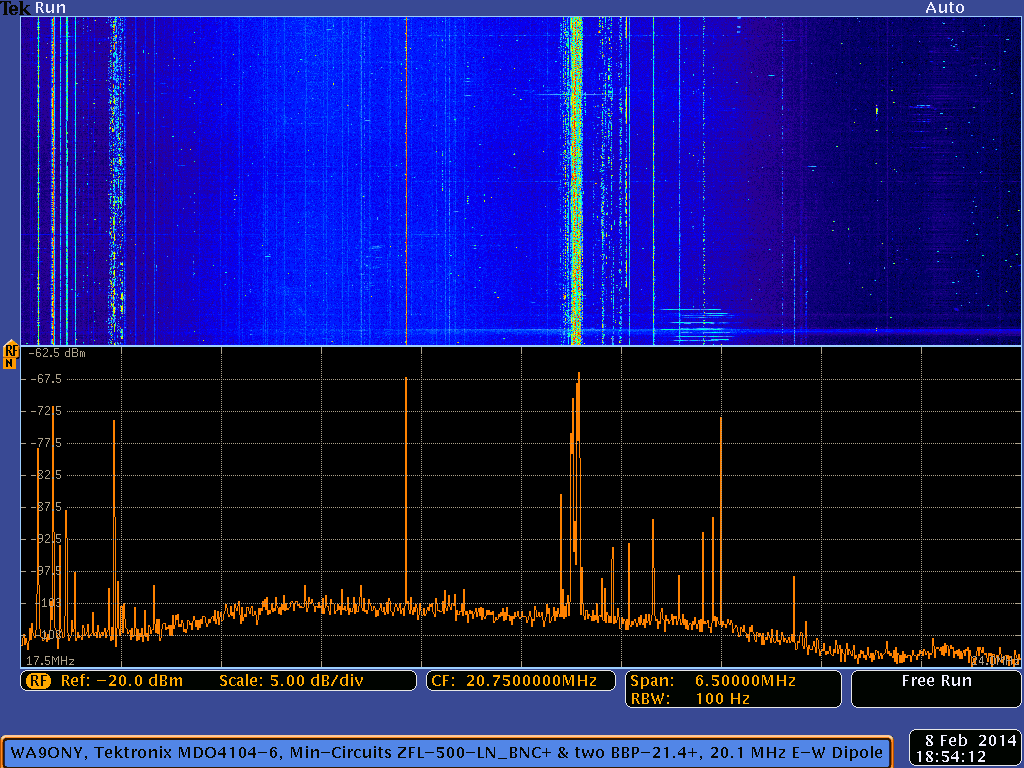

United States Frequency Allocations
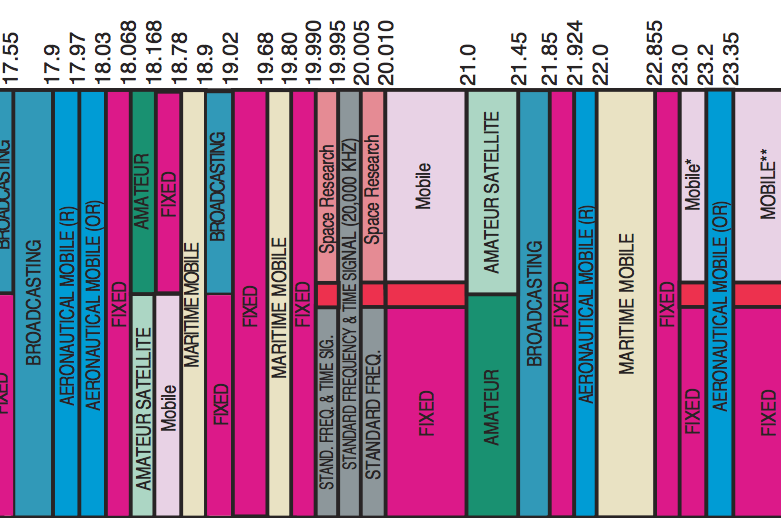

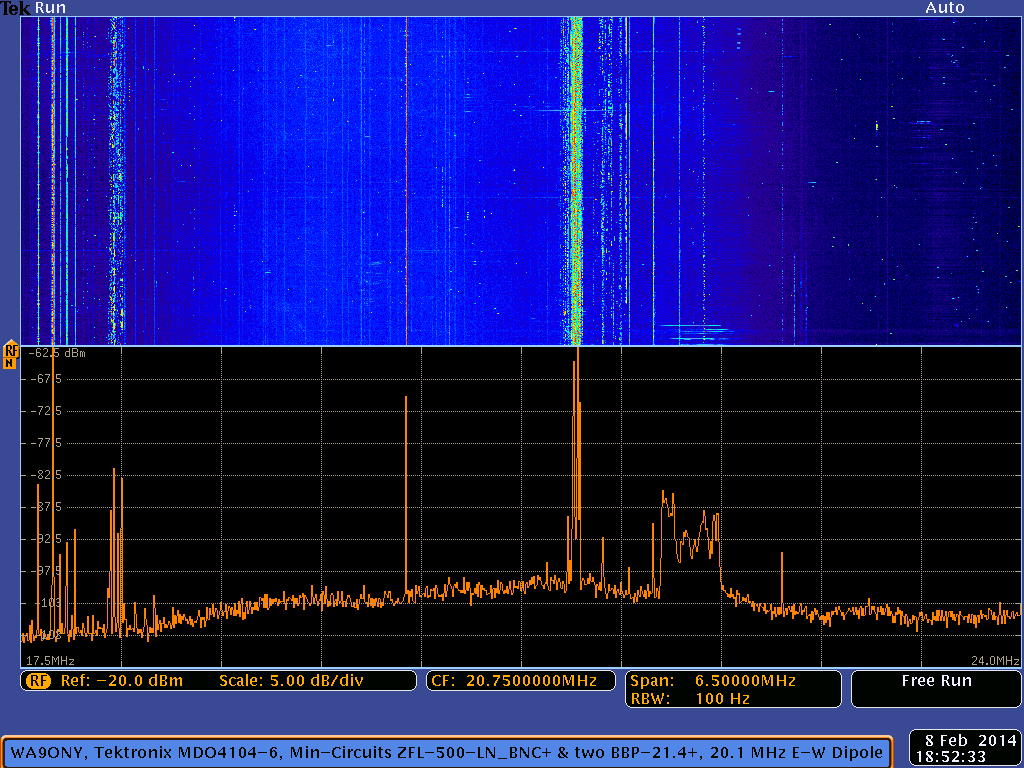
Summary
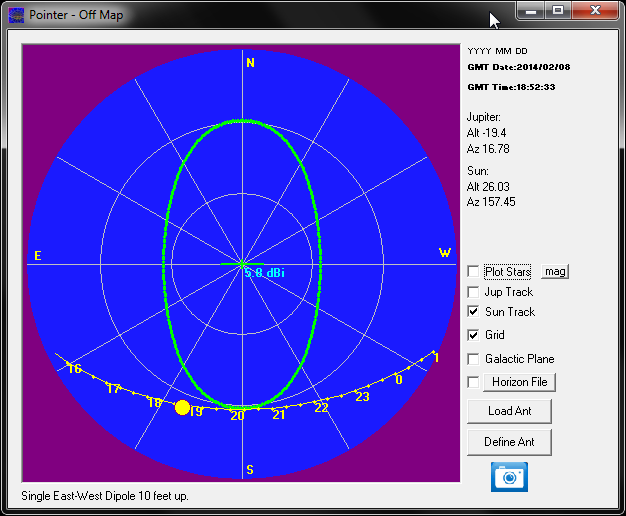
The above spectrum trace shows the approximately 4 dB rise in nose level at 20.75 MHz center frequency for the strongest Sun radio emission signal acquired at 18:52:33 UT. Sun radio emissions are from approximately 20.1 MHz to 24.0 MHz and Sun was 26 degrees above the horizon when these radio emission occurred.
Tektronix MDO4104-6 spectrum analyzer.
- 17.5 MHz start frequency
- 20.75 MHz center frequency
- 24.0 MHz stop frequency
- 6.5 MHz frequency span
- 6.5 MHz capture bandwidth
- 100 Hz resolution bandwidth
- 650 kHz per horizontal division
- 5 dBm per vertical division
- ~7 seconds spectrum update rate
- Spectrogram bottom is the current spectrum trace shown at the bottom of the display.
- Spectrogram top is the oldest spectrum, approximately 30 minutes after the current spectrum trace at the bottom.
|
|
The below spectrum trace is before the solar burst at 18:52:26 UT.
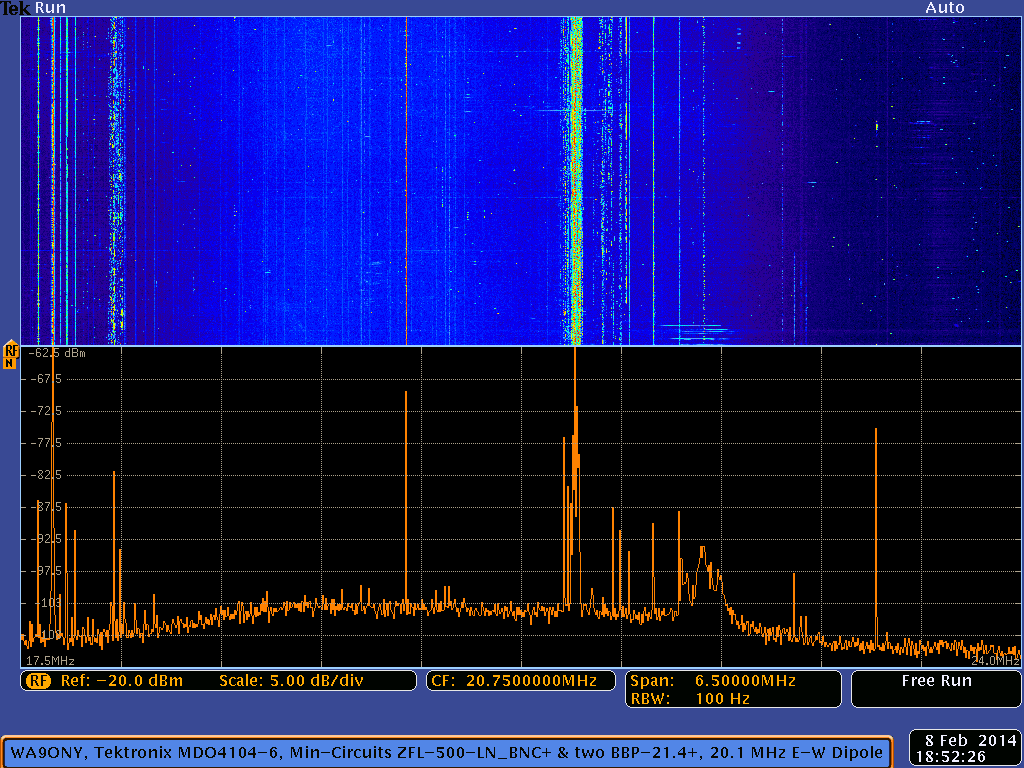
Video

Observing Information
- OBS-Time: February 8, 2014, 1853 UT
- OBS-Location: Camas, WA USA, 16.6 miles East-North-East from the center of Portland, OR, USA

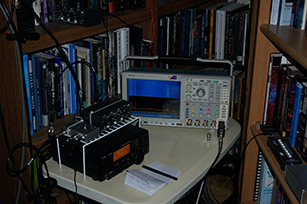
Spectrum Analyzer Equipment

Radio Equipment
- Icom
IC-R75
- 20.75MHz
- LSB
- AGC off
- Preamp 2 on
- Behringer
XENYX 302USB 5-Input Mixer with XENYX Mic Preamp and USB/Audio Interface
- The HP laptop does not have a line input, only mic input.
- XENYX 302USB works great taking the IC-R75 back recorder jack [REC] signal and digitizing it.
- The XENYX 302USB has its own Line gain control.
- The XENYX 302USB has its own headphone gain control.
- I use a Y cable to run the XENYX 302USB to headphones which I use at night time and an external powered speaker when I am home alone. It was very impressive to hear this solar burst and watch it on Radio-SkyPipe II at the same time.
- MFJ Enterprises
MFJ-1040C Preselector
- Radiowavz
15-DP11 15M dipole antenna with 1:1 Balum

Software
- Radio-Sky
Radio-SkyPipe II
An Internet Enabled Strip Chart Recorder
- Radio-Sky
Radio-Jupiter Pro 3
Sky map shows where Sun is in the antenna beam.
- Python 2.7.6 script running on a HP G70 Windows Vista laptop using socket server LAN cable without a router/hub to data log the Tektronix MDO4104-6 screen captures to a USB 16Gb memory stick plugged into the MDO4104-6.

Chart Analysis
- Sun burst is the large signal ending at 18:53:19 UT
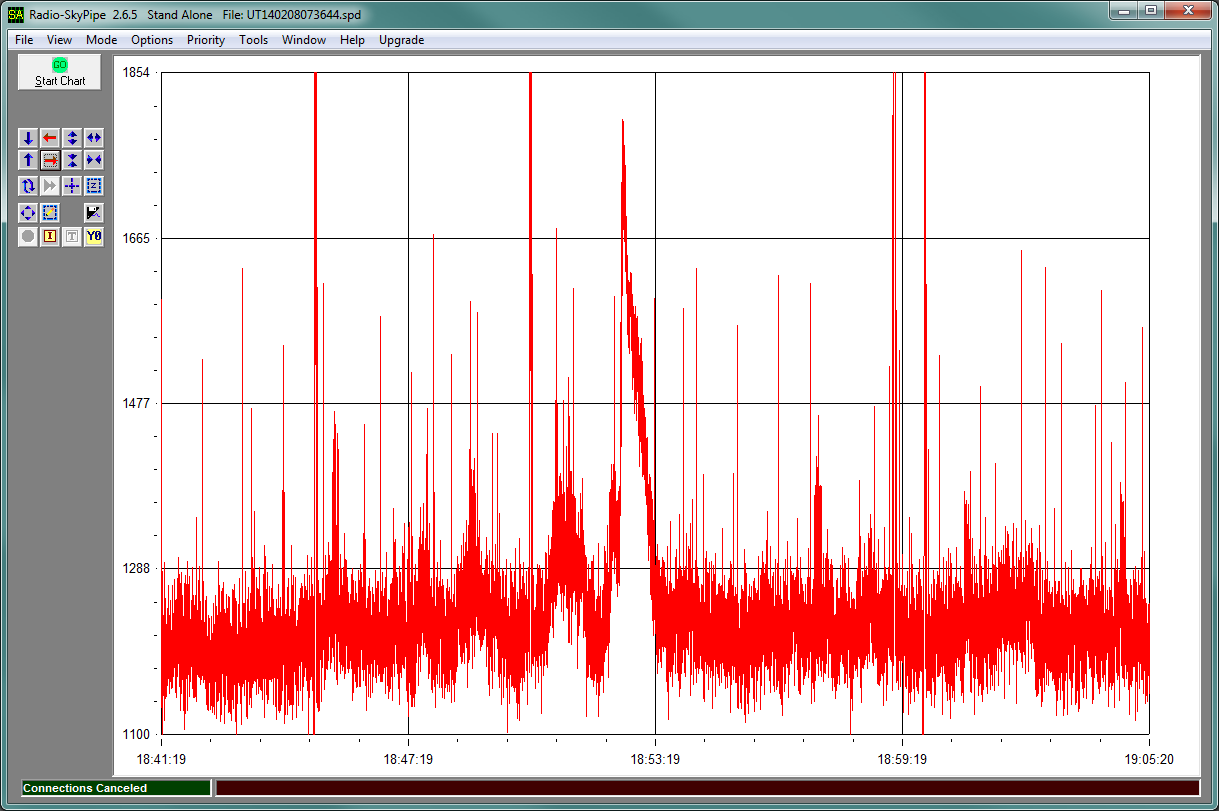
- Zoom view
- Rapid onset and slower decay, burst looks like a shark fin.
- Multiple plateaus on trailing edge
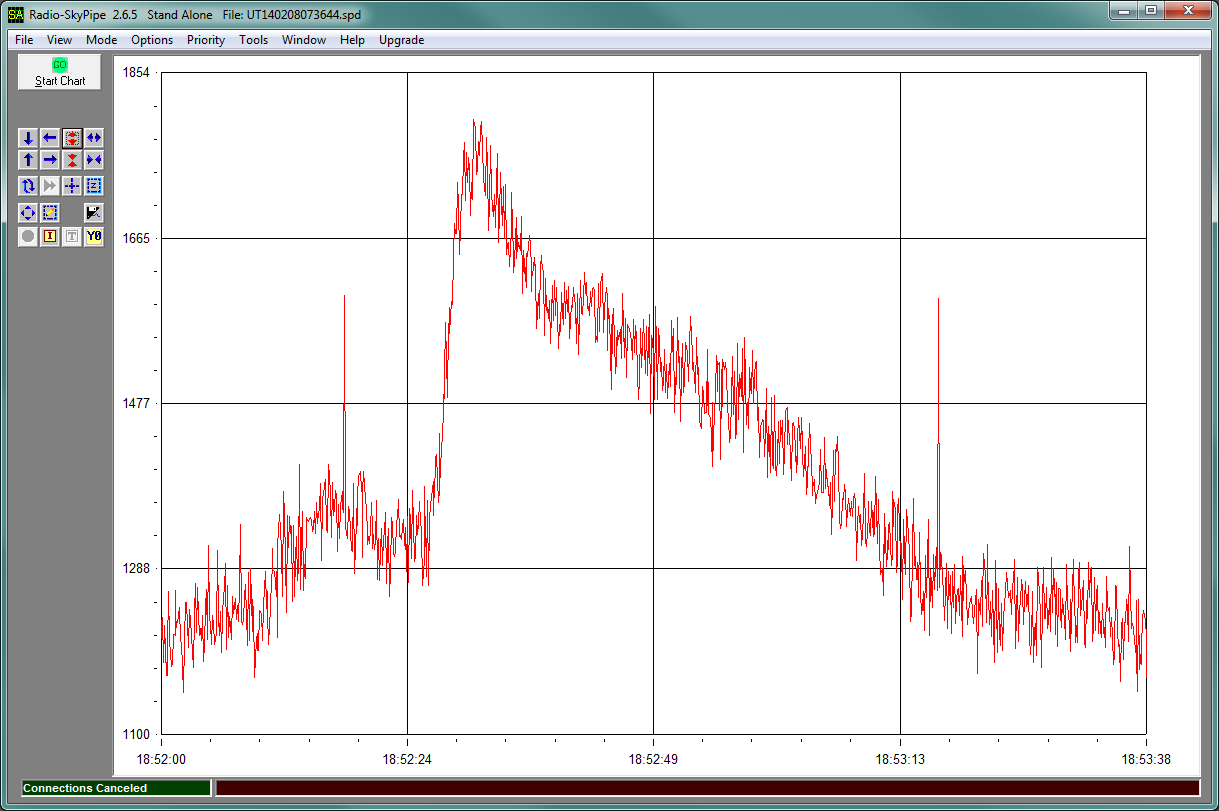

Verifying Solar Burst
NOAA/ National Weather Service
National Centers for Environmental Prediction
Space Weather Prediction Center
Solar Event Reports (Edited Events)
- Solar burst began at 1850 UT and ended at 1853 UT
- Reporting observatory SAG: Sagamore Hill, MA, USA
- Event RSP: Sweep-frequency radio burst
- Frequency: 25 MHz to 180 MHz
- Particulars: type V burst of major intensity 2
- Type V burst: Brief continuum burst.
- 2 is significant intensity rating
:Product: 20140208events.txt
:Created: 2014 Feb 09 2102 UT
:Date: 2014 02 08
# Prepared by the U.S. Dept. of Commerce, NOAA, Space Weather Prediction Center
# Please send comments and suggestions to SWPC.Webmaster@noaa.gov
#
# Missing data: ////
# Updated every 30 minutes.
# Edited Events for 2014 Feb 08
#
#Event Begin Max End Obs Q Type Loc/Frq Particulars Reg#
#-------------------------------------------------------------------------------
6070 1850 //// 1853 SAG C RSP 025-180 V/2
|

NASA STEREO / WAVES
NASA WIND-WAVES: The Radio and Plasma Wave Investigation on the WIND Spacecraft
NASA STEREO (Solar TErrestrial RElations Observatory)
NASA STEREO / WAVES data
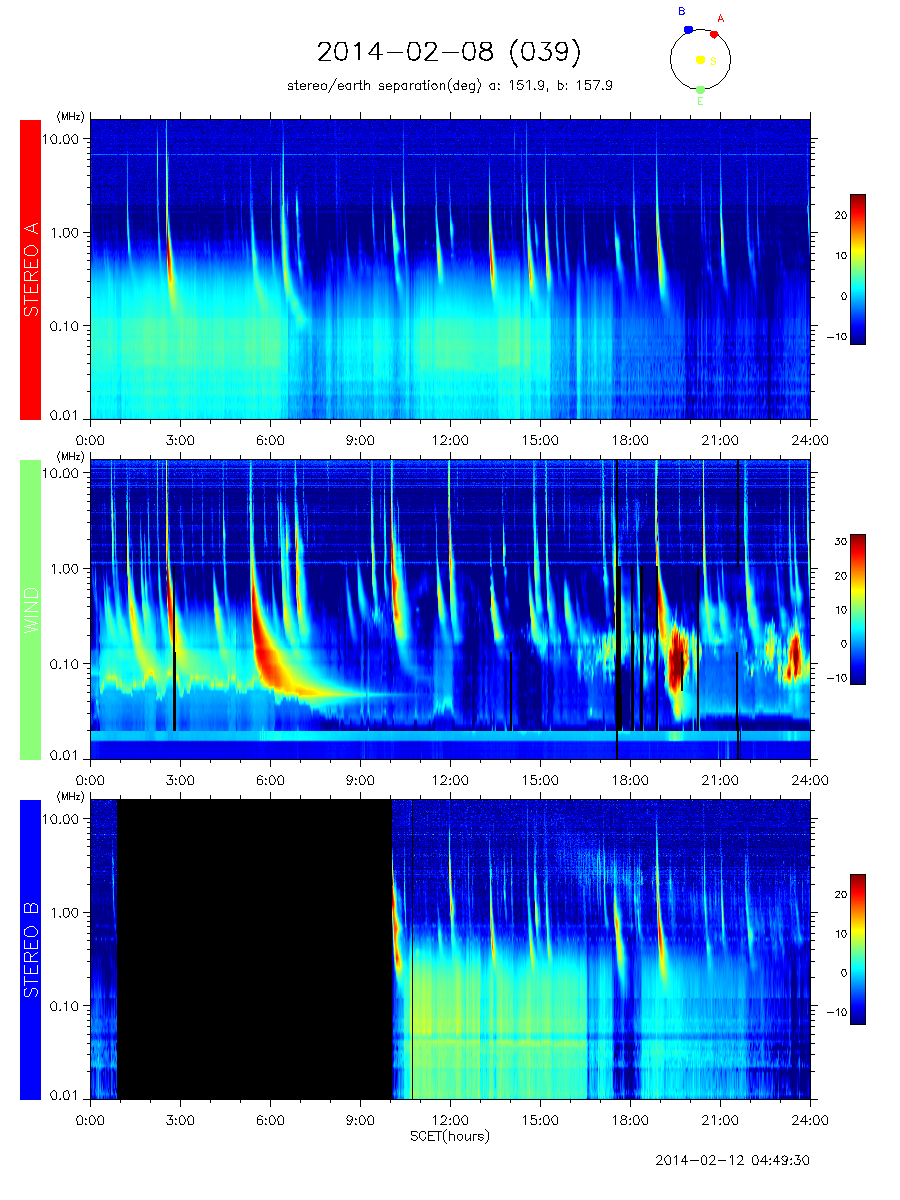


|
![]()
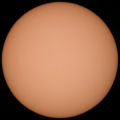
![]()



